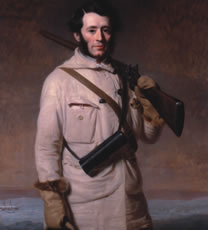MEDIA COVERAGE
Radio 1's Morning Ireland
Dundalk devotes exhibition to Arctic Fox
RTE's Nationwide
Exhibition on Dundalk polar explorer
About the Arctic
Arctic
Named after the Greek word arktos meaning bear, the Arctic gets its name from the constellations Ursa Major and Ursa Minor, which are visible all year round in the northern sky. This area is located at the Earth’s North Pole, comprising parts of Canada, Greenland, Russia, Alaska, Norway, Sweden, Finland and Iceland, and covers some 14 million square km. Whilst several definitions as to the area’s actual location exist it is generally accepted that it occupies the area north of the Arctic circle 66º 33’N. The region consists of a vast ice-covered ocean surrounded by treeless frozen waste.

The area is important for several reasons; it has sizeable potential resources including oil, gas and minerals. Because of this, several countries (including Canada, Denmark, Russia and Norway) over the past number of years have staked a claim on the area. In a time of increasing oil and gas prices coupled with growing demand for energy the strategic importance of the Arctic cannot be overstated.
The area is also important from a scientific viewpoint acting as an indicator of global warming as can be seen from the surrounding satellite images. As global warming continues access through the Arctic (specifically through the Northwest Passage) becomes easier and easier, reducing shipping times and distances between ports in Europe, Asia and America by significant amounts, thus saving money (and ironically energy). Because of improvements in technology the Arctic continues to have a significant role in world politics and economics.


